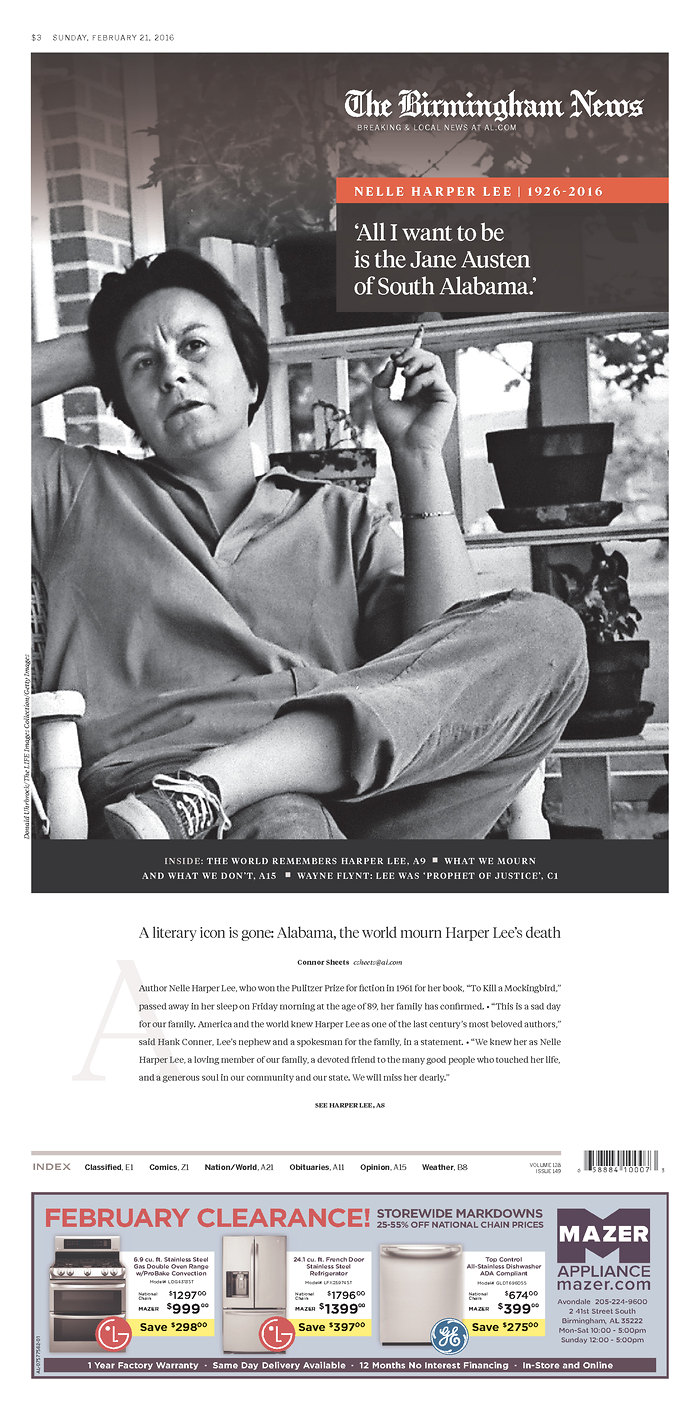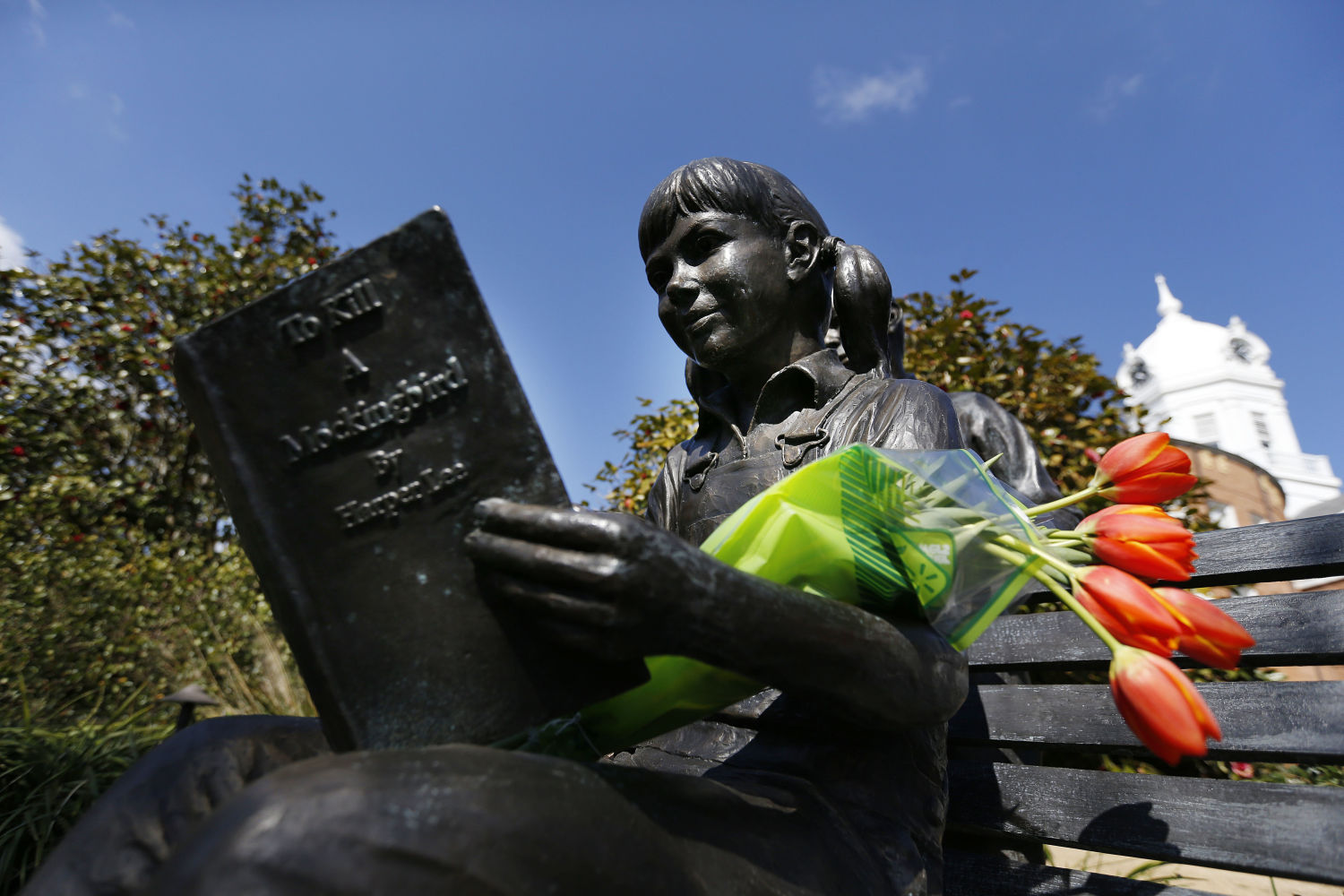Since coming to AL.com and The Birmingham News about a year ago, statewide investigative reporter Connor Sheets hadn’t written any obituaries. Until Friday.
At close to 8:30 a.m., Sheets got texts from two sources who’d heard a rumor — Harper Lee had died. The paper had two obituaries waiting, one short and one long. He started making calls and confirmed what he’d heard from several sources, including an official one. While he worked, his coworkers watched social media for the news to break. It didn’t, until after 9 a.m., when Sheets published the first story about Lee’s death.
The reaction was intense, of course. But the impact of the death of the beloved author of “To Kill a Mockingbird” really hit Sheets after he tweeted the news and then watched it quickly ripple out.
Sheets and I spoke several times about whether or not he broke the news, and if (or why) that matters. He and his editor are confident that they did and point to a few things. First, they saw no evidence of it on social media before Sheets’ piece, and they were watching carefully. After they published the story and tweeted it from both Sheets and AL.com‘s account at 9:21 and 9:22 a.m. Friday, both were retweeted close to 2,000 times. They watched as other news outlets retweeted the news and cited them, including BuzzFeed News. The stories that followed took about 14 minutes to come out, Sheets said.
Stories about who broke what news when are usually met with at least two reactions. One: Who cares who broke it? And two: On-the-ground reporting is still important. To Sheets, it’s significant that news of two recent deaths of public figures was broken by local reporters.
That morning, Sheets got back to work on the longer obituary. He wanted to weave together the last chapter of Lee’s life and the controversial publication of her second book, “Go Set a Watchman,” with the original obituary prepared by Michelle Matthews. And he wanted to do so in a way respectful of Lee’s legacy.
While he worked, the newsroom was already humming with the news and how to cover it.
“She’s this literary icon,” said Dave Sharp, news editor. “She’s this Alabama icon. She is certainly a worldwide personality.”
They started the day knowing that the story of Lee’s death would include a lot of moving pieces that had to come together, Sharp said. Those pieces included: the obituary, an editorial marking Lee’s death, an editorial cartoon, a timeline, national reaction and a Sunday package.
Early on Friday, Sharp sent this note out to the newsroom:
All, please take a moment and consider what we do for Sunday papers on Harper Lee’s passing is a once-in-a-lifetime news event. Not just for us, but for those we serve.
Now, I don’t say this out of lack of confidence in our team. I say this because we’ll have multiple players on this the next two days AND because there are going to be a ton of moving pieces:
Be careful. Double check. Follow through. Ask for help.
“We knew we had to give our readers something special in our Sunday product,” Sharp said. “We also wanted to honor Ms. Lee’s legacy at the same time, what she meant to Alabama, what she meant to all of us through her novel.”
They knew early that they wanted a historical image of her, something that wasn’t common. Editors worked with the enterprise design team, which looked through Getty Images and found pictures of Lee on her front porch in Monroeville at what Sharp described as a breaking point in her life — just after winning the Pulitzer for Mockingbird.
“We wanted this to dominate the front page,” he said.
And they wanted everything else to feel quiet around the large black and white image of Lee.
There’s a strength in it, said Sara Quinn, a Poynter affiliate faculty and the president of The Society For News Design, after I forwarded her the page.
“A lot of times, something quiet actually speaks more loudly than things that scream,” she said.
The front, designed by Jen Cieslak, includes the first graph of Sheets’ longer obituary.
He’s not sure that Lee’s death is the final chapter to her story. Like much of the world, he plans to pay attention to what we learn of her will and how her lawyers and family members respond to it.
Friday wasn’t the first time he wrote about Lee, by the way. After moving to Alabama from New York, he headed to the Monroeville nursing home where Lee lived after news broke that her second novel was on the way. Lee wrote about his failed attempt to meet her, the letter he wrote to her and what appears to be her response, which was, simply, “Go away!







